

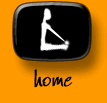 |
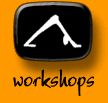 |
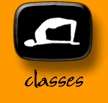 |
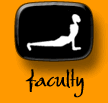 |
 |
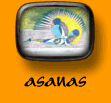 |
|
DOWNDOG | EAGLE | COBRA | HERO | HALF MOON | CORPSE | GATE
TRIANGLE | PEACOCK | LOCUST | COBBLER | SHOULDER STAND HEADSTAND | BRIDGE | CAMEL | COW FACE | UP BOW | INVERTED STAFF SEATED WIDE ANGLE | HEAD TO KNEE | TORTOISE | DANCER NOOSE  |
| Ardha Chandrasana ~ Half Moon Pose Images by Nancy Van Kanegan Because Ardha Chandrasana gives the inner thigh muscles a powerful stretch, it's advisable to first do some poses, such as Utthita Trikonasana (triangle), Virabhadrasana II (side warrior) or Parsvakonasana (side angle pose), that stretch the inner thighs less intensely. For that reason, and because this is a lateral pose in which the hips and shoulders stack over each other as they do in triangle, half moon pose is often done out of triangle (but not necessarily, as we'll see in a bit). So if you know triangle pose, get into it, legs firmly grounded and arms extended up and down. Then bend your front knee, reach forward with your bottom hand and place it (or just the finger tips for starters) about a foot in front of and slightly to the outside of your front foot, so the thumb and little toe are roughly in the same line. Looking down at your big toe, with an inhale lift your back leg as you straighten the standing leg. Stretch back through both the heel and ball of the lifted foot, and press down through the heel and big toe of the foot you're standing on. Stack the shoulders and hips, and stretch up through the raised arm. Root your tailbone in and extend out through the top of your head. If you're steady, you can turn to look up at the thumb of the raised hand. Balancing in the full pose can be tricky, especially if you don't keep the legs energized and the torso open and extended. To do so, keep grounding into the supporting foot and directing the rebound energy out through your spine and limbs. Let your core stay mobile and pulsing with the breath, so you don't become rigid and restrict the flow of energy through the pose. Keep the knee and foot of the standing leg facing straight forward, not turned in, and make sure the sitting bone of the standing leg stays in the same vertical plane as the heel, so it doesn't fall to the outside and torque the knee inward. Also, keep the ribs back and the heart open in back as well as front, so the spine stretches evenly front and back and you don't jut the ribs or collapse your center. Perhaps most important, stay connected with the breath, letting it move you more deeply into the pose. As you inhale extend, and as you exhale expand, "exploding" gently from the center of the pelvis and shooting energy through your spine and limbs like a pulsing star. Lift the raised foot higher as you extend. Say "wow" with your body to clarify the lines of energy, and note how much steadier you become. After 4-5 smooth and even breaths, bend the front knee, lower the back leg, straighten the front leg into trikonasana for a breath, then come up with an inhale. If your legs are tight and you can't both straighten the standing leg and keep the hand of the supporting arm on the floor, rest the hand on a block, at whatever height works for you. If your legs are weak and you keep collapsing the torso, practice with your hips and back against a wall. In fact, doing the pose against the wall really helps you focus on opening the chest, shoulders and hips, improves alignment, and increases the stretch on the standing leg. I highly recommend it - at least from time to time - even if you are adept at doing the pose in the middle of the floor. A less usual way to do Ardha Chandrasana, but one that I actually prefer, is to simply do it. By that I mean starting by standing with the feet about a yard apart. Rest the hand of the top arm on your sacrum at the small of your back and use it as a lever to pull your top shoulder back and open across the collar bones. Then bend the front knee, reach down to place the hand, and lift the back leg as you straighten the standing leg, as described above. As you lift and extend, revolve the torso open, root the tailbone in and roll the top hip up. Keep drawing muscular energy in and shooting pranic energy through the bones with the breath, following the alignment tips mentioned. After several mindful extensions of breath energy in the pose, lower the raised arm to the small of your back, bend the front knee as you lower the back leg, and come up to stand. Take a moment to savor the wonderful feeling of having floated in the heavens from your base on the earth. For more on Ardha Chandrasana, see the excellent article on it by Donna Farhi in the September 1999 Yoga Journal. Also, try the variation with the top arm wrapped around your back that Erich Schiffmann describes in his book, Yoga: The Spirit and Practice of Moving Into Stillness. Text by Tim
Noworyta |
||
|
E-mail: info@yogamind.com | Return Home :: mindfully designed by braddon.com :: |